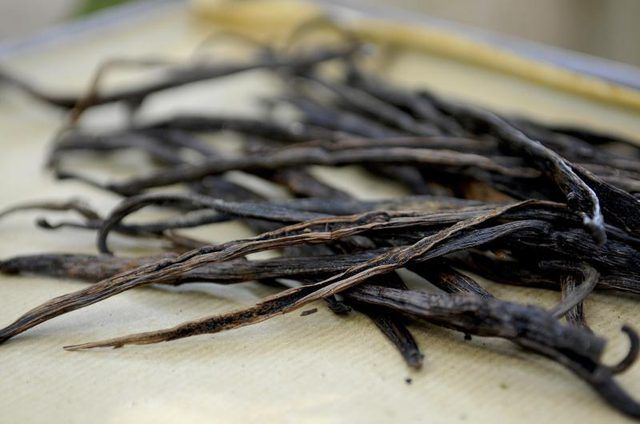Bulbs
Flower Basics
Flower Beds & Specialty Gardens
Flower Garden
Garden Furniture
Garden Gnomes
Garden Seeds
Garden Sheds
Garden Statues
Garden Tools & Supplies
Gardening Basics
Green & Organic
Groundcovers & Vines
Growing Annuals
Growing Basil
Growing Beans
Growing Berries
Growing Blueberries
Growing Cactus
Growing Corn
Growing Cotton
Growing Edibles
Growing Flowers
Growing Garlic
Growing Grapes
Growing Grass
Growing Herbs
Growing Jasmine
Growing Mint
Growing Mushrooms
Orchids
Growing Peanuts
Growing Perennials
Growing Plants
Growing Rosemary
Growing Roses
Growing Strawberries
Growing Sunflowers
Growing Thyme
Growing Tomatoes
Growing Tulips
Growing Vegetables
Herb Basics
Herb Garden
Indoor Growing
Landscaping Basics
Landscaping Patios
Landscaping Plants
Landscaping Shrubs
Landscaping Trees
Landscaping Walks & Pathways
Lawn Basics
Lawn Maintenance
Lawn Mowers
Lawn Ornaments
Lawn Planting
Lawn Tools
Outdoor Growing
Overall Landscape Planning
Pests, Weeds & Problems
Plant Basics
Rock Garden
Rose Garden
Shrubs
Soil
Specialty Gardens
Trees
Vegetable Garden
Yard Maintenance
How to Grow the Vanilla Orchid
How to Grow the Vanilla Orchid. Named for its long pod, called a *vanilla* in Spanish, the vanilla orchid (Vanilla planifolia) is a vine. In U.S. Department of Agriculture plant hardiness zones 11 through 12 it grows outdoors year-round, but in most areas of the United States the vanilla orchid is grown as a houseplant. The bee that pollinates this...

Named for its long pod, called a vanilla in Spanish, the vanilla orchid (Vanilla planifolia) is a vine. In U.S. Department of Agriculture plant hardiness zones 11 through 12 it grows outdoors year-round, but in most areas of the United States the vanilla orchid is grown as a houseplant. The bee that pollinates this plant in the wild doesn't live outside the orchid's natural habitat, but you can hand pollinate a vanilla orchid using a toothpick or fine brush.
Light, Soil and Temperature
The vanilla orchid prefers warm, partially shaded growing conditions, with well drained soil. Bright shade with one or two hours of early morning sun provides the right light levels for this plant, indoors and outside. The soil should be rich in organic matter and fertile. For an indoor orchid, use potting soil labeled as a commercial mix formulated for orchids. You can also make your own potting mix from 1 part bark and 1 part sphagnum peat moss.
The vanilla orchid grows best at 60 to 65 degrees Fahrenheit at night and 80 to 85 F during the day. Don't place this plant near an artificial heat source, such as a fan or radiator.
Water and Fertilizer
Moist soil, high humidity and regular fertilizing promote good growth in the vanilla orchid. Grow an indoor plant in a container that's just large enough to fit the root ball, and has drainage holes in the bottom. A mature plant fills a 3- to 5-gallon pot.
Apply water regularly so the soil or potting mix surface remains just moist to the touch. Water container plants until water flows through the drainage holes, and then stop. Mist the vanilla orchid leaves and stems every day with a hand mister, or stand the plant in its pot on a tray of pebbles and water, to provide high humidity levels.
Spray an 0.02 0.02 0.02 foliar fertilizer formulated for orchids over the plant's leaves and visible roots, and over the soil surface, once per week.
Pests and Diseases
Spider mites, mealy bugs and fungus rots can affect a vanilla orchid. Spider mites are too small to see, but they leave fine webbing over leaves and stems. Mealy bugs excrete a cottony coating. Fungus rots cause wilting and discolored foliage.
Treat an infestation of spider mites or mealy bugs with an insecticidal soap. Spray all the vanilla orchid's surfaces, except the flowers. Spray an outdoor vanilla orchid on a cloudy day. Apply the insecticidal soap every week, if necessary. Prevention is the best cure for fungus rot. Don't overwater a vanilla orchid, making the potting mix or soil soggy. Severely affected plants are unlikely to recover and should be put in the trash.
Support Structure
In the wild, the vanilla orchid can grow up to 300 feet long, but in containers indoors it grows 8 to 10 feet long and 6 to 8 feet wide. The plant must grow downward as well as upward to flower. Use strips of lumber 1/2 to 1 inch thick and tacks to provide support for an indoor or outdoor vanilla orchid.
Cut small strips of lumber as wide as the orchid container, or 8 inches wide for an outdoor plant. Hammer the strips into two long pieces of lumber to join them together like the rungs of a ladder. Leave 1 foot at the base of the support bare. Push the bare end of the support structure into the container or soil near the vanilla orchid, taking care not to damage the plant's roots. Push the lumber to the base of the container, or as deeply as possible into the soil so the wood is firm and doesn't wobble. Tie the vanilla orchid to the structure with twine as it grows, and lead the vine downward when it reaches the top.